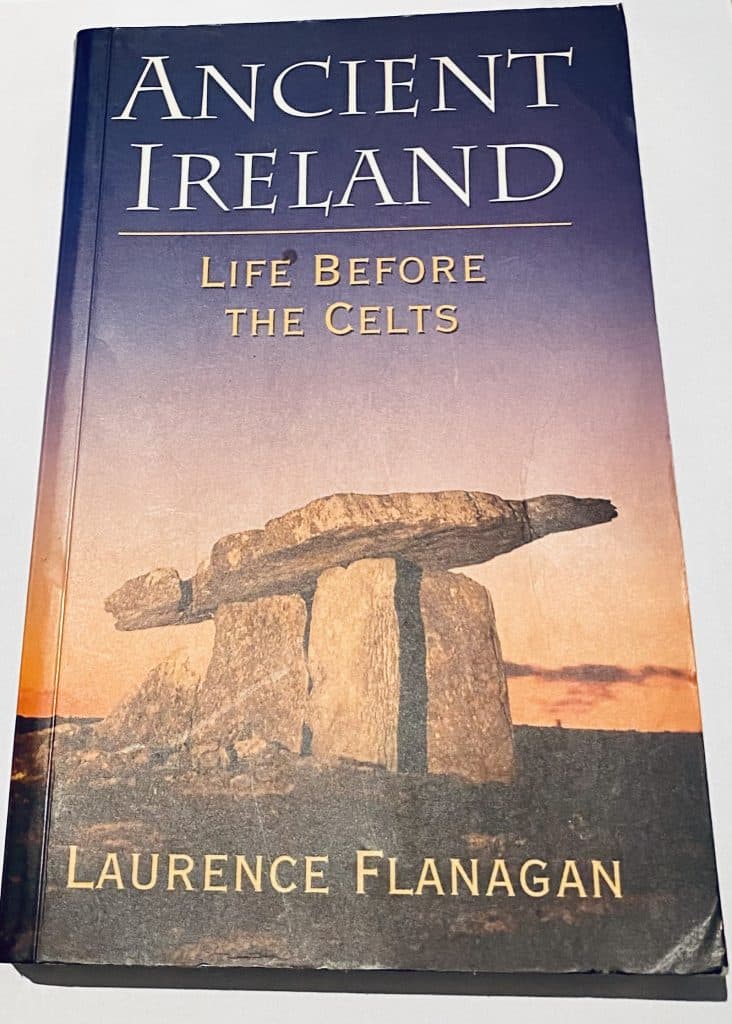Archaeology can often feel as dry and dead as the very artifacts it unearths. Debates around dating methodologies, discoveries of inane objects of little to no importance, or merely terminology so densely formulated in ‘isms’ and ‘tions’ that no lay-person has a hope of understanding it. Thankfully, Ancient Ireland by Laurence Flanagan can be accused of none of these pitfalls. Instead, it presents a simple chronology of ancient Ireland, walking us through each period by covering the most significant archaeological evidence available.
It truly is a unique and welcome insight into the ancient world of prehistoric Ireland.

Book structure
The structure of the book is very effective:
Part 1 begins with the Mesolithic period through to late bronze age, in which we are given a high-level overview of each epoch. These are contextualised with archaeological research and evidence showing how life could have looked for the those who lived on the island 1000s of year before.
Part 2 provides analysis under different social themes covering: buildings, dress, culture, trade, travel, amongst many others. This enables readers to both read the book chronological or as a reference text.
Verdict
I recently visited the Giant’s Ring outside Belfast, an incredible 200m-wide circular embankment with a henge at its centre. But I couldn’t help but feel that the experience was curtailed by a lack of knowledge of the site’s significance. Flanagan’s book does a tremendous job filling that gap. It presents what we know about a given period in Ireland, rather than mere sites or objects. This means I can see the Giant’s Ring not as a location, but as one of the neolithic sites which has been passed down to us. Using our knowledge of this period therefore contextualises what is otherwise a pile of earth and stones.
The second section of the book provides an excellent reference source for the layperson. It is clearly structured around different thematic areas, such as farming or astronomy. Moreover, what makes this particularly useful is the period covered. Most reference sources are focused on the Iron Age onwards, or later still, or they lack any clear defined period at all (which is the most common practice). This greatly improves the value of such a book, not simply as something you read and then discard, but as a reference source which I’ll return to again and again.
Favourite quote
It is necessary to always remember that although the flint tools, pots, tombs, house plans, and decoration so frequently in archaeological textbooks are important, they are important primarily as documents of social history – as clues to how their makers and users eked out a precarious living or enjoyed a lavish lifestyle.
Favourite fact
The ratio of ore to fuel to smelt copper was 1:2500. So for 20kg of copper they needed a incredible 2500 tonnes of wood, the equivalent of 100 mature oaks felled, logged and converted into charcoal.
Author
Laurence Flanagan is an archaeologist and a former keeper of antiquities at the Ulster Museum, Belfast. This is one of many books he has written, but one of the most well known on Irish archaeology.
Book specification
233 pages, 17 chapters, published in 1998.
Available here on: Amazon £14.99
For more of my posts see here and here for my Twitter account

Leave a Reply
You must be logged in to post a comment.